How One Urban District Designed STEM for All
A MiddleWeb Blog

So, how do you design a program that allows all students access to STEM, not just the kids who seem obvious choices for a handpicked class?
That question spurred colleagues Dr. Susan Pruet, Carolyn DeCristofano, and me to write an article about a large school district we worked with that accomplished this for middle grades kids. Susan was the Program Director for the Mobile Area Education Foundation (MAEF) and the head honcho in designing this K-12 workforce development STEM program.
I’m using excerpts from that article to explain how the district answered the equity question for the middle grades and what we learned from that.
The Task
Designing a sustainable STEM program to reach all students – in a school or across a school system – requires extensive research and planning. The Mobile County Public School district, the largest in Alabama, had over 60,000 students, with over 70% living in poverty and about 50% African American students.
Given the school district size, the demographics, and the education community’s general lack of awareness of STEM as a K-12 workforce strategy, Dr. Susan Pruet faced a daunting challenge: What type of STEM intervention would enable the schools to engage and prepare this diverse group of students?
She began by pulling together a team of leaders from business, industry, education (including teachers) and the community. After a year of collaborative, partnership-driven planning, the team decided on an approach. They would use high-interest engineering design challenges combined with the engineering design process to engage and prepare all students in STEM, with the goal of motivating them to take rigorous high school math and science courses.
The middle grades are a critical decision juncture for our youth. By the end of middle school, students must decide their pathway. Too often, they choose a path of least resistance – one that requires minimal math, science and technology – instead of setting their sights on a higher trajectory. For the team, an intensive middle grades intervention was key to a successful STEM program.
Middle Grades STEM-for-All
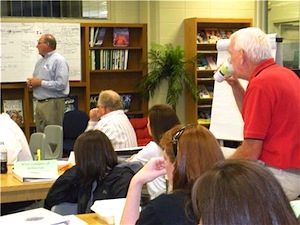
So that all middle school students could benefit, the planning team resolved to embed STEM in the regular core curriculum. And, since math is the gatekeeper for student success in so many STEM fields, the math teachers must be key players along with the science teachers. The team decided to embed integrated STEM experiences in both math and science classes.
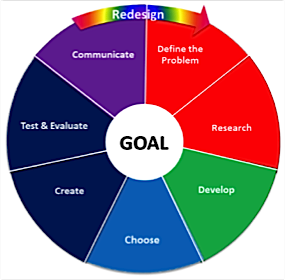
After seven years of curriculum development, teacher training, implementation, evaluation, and redevelopment, the curriculum was in place and being implemented regularly by target schools in the district while the final external audit was being completed.
The Benefits
This integrated STEM approach provided a number of benefits for students and teachers.
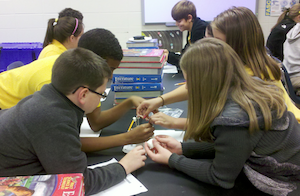
Rather, mathematicians, scientists, engineers and technicians typically work together, combining knowledge from their different STEM fields, to find solutions.
Math and Science Teachers increased their content knowledge in joint professional development. Math and science teachers began to see more clearly where the big ideas of both disciplines overlap. For example, compound probability overlaps with Mendelian genetics. The flow of water through watersheds overlaps with velocity, rate of change, and slope.
Teachers also realized that they were using the same vocabulary words differently in math and in science, and that this could contribute to students misunderstanding a concept. In science, volume might be described as capacity measured in liquid units (ml.). In math, volume would be the measure of the interior of a three-dimensional object using cubic units (cm3.).
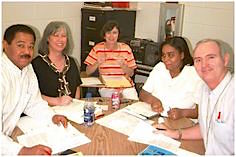
Students developed high interest in and positive attitudes toward STEM. Some interesting findings are emerging from the NSF-funded longitudinal study of the impact of this STEM curricula. Collaboration across math and science silos is positively impacting students’ STEM beliefs and interest. Studies are finding that the students who experienced the curriculum modules value traits associated with STEM and STEM careers – e.g., teamwork and helping others – more than those who were not exposed to the modules. STEM students report greater confidence in their STEM skills and show greater interest in and knowledge about engineering as a career.
Our Conclusion: STEM-for-ALL Is Essential and Worth All the Effort
Traditional approaches don’t successfully engage enough students in STEM and STEM-related careers – especially those students currently underrepresented in these fields. One strategy that appears to be working for middle grades students is jointly implementing integrated STEM design challenges in both math and science core classes.
This approach gives all students access to STEM and opportunities to learn 21st Century skills. Students understand the relevance of what they are learning about science and math, and apply it to real problems. Teachers form collegial, collaborative relationships.
Note that this complex intervention is, by design, disruptive to school-as-usual. It requires extra effort plus time for coordination and professional development. However, results show that breaking down the old “content silos” is not only worth it, but essential, if educators are serious about producing more students eager and able to pursue STEM coursework and careers.
* For more information about the curriculum developed, contact Melissa Dean, mdean@maef.org


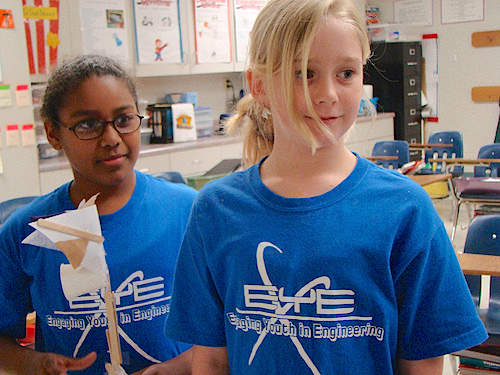

































Hi Anne. I’d like to contact you regarding consultation services for our school district. How can I best reach you?
Thanks,
Tamara Sanders
tamaramsanders@gmail.com
Hi, Tamara – I recently sent you the information you asked for, along with some additional information about good STEM consultants. And I copied you on a message to one of those consultants. If you did not get this information, or need further information please notify me again.
Do you know of any other high-poverty areas in the country that have particularly successful STEM middle school programs?
I haven’t actually researched that information, but I expect there are some out there. I’ll keep your request in mind – it’s a good question and needs answering.
Hi I’d like to know what you think about implementing a program like this at a lower level. Oklahoma City School District is looking into starting a program like this but for elementary student. Any advice on how to get started or help promote something like this would be much appreciated.
Annette, I don’t know when Anne Jolly will be able to respond to your comment. You may find helpful suggestions in her post https://www.middleweb.com/26244/building-a-foundation-with-elementary-stem/ . Susan at MiddleWeb
Hi, Annette,
Thanks for your question about implementing STEM elementary programs. As a matter of fact, that’s a subject I’m researching now. While I have a middle school focus, it’s obvious that the foundation must be built earlier in the elementary classrooms. I’ll give you urls to two sites I’m looking at, if you like.
This one overviews STEM elementary education (K-5) in Maryland. http://bit.ly/2Ub9QQQ
This one from North Carolina gives an elementary STEM implementation rubric that shows some important student outcomes. http://bit.ly/2UbYD2H
STEM is Elementary: http://bit.ly/2U5JlfE
Curioisity Drives STEM http://bit.ly/2U7V9yd
Stay tuned for more information about elementary school STEM – the value and suggestions for how to implement.
Hi Anne, I hope you are with good health. I am currently working on developing a STEM program for primary grades. Any suggestions that you would like to give?
Hi, Zahra,
I have a new edition of a STEM book coming out that gives suggestions on setting up a STEM program in grades 4-8. It would also be suitable for other grade levels. The book is called STEM by Design: tools and strategies to help students solve real-world problems (grades 4-8). I hope you find it useful.